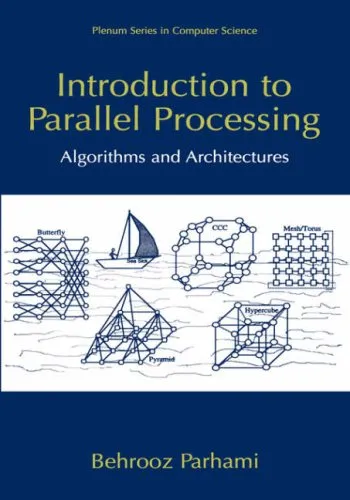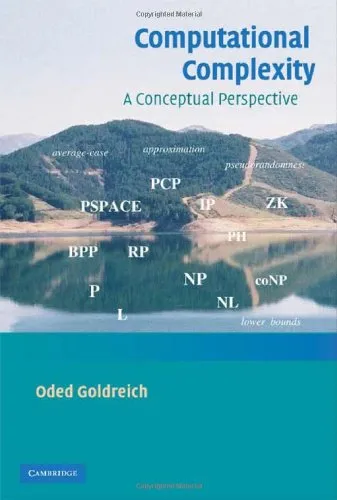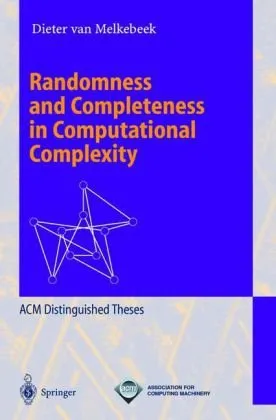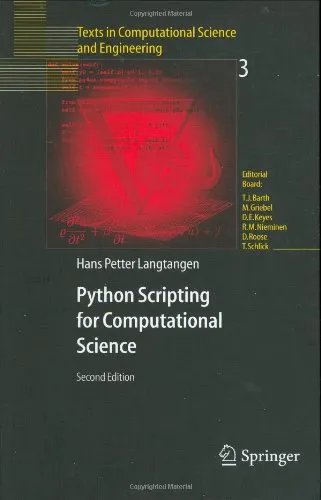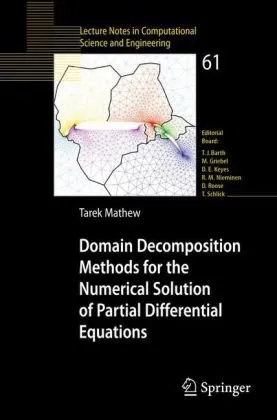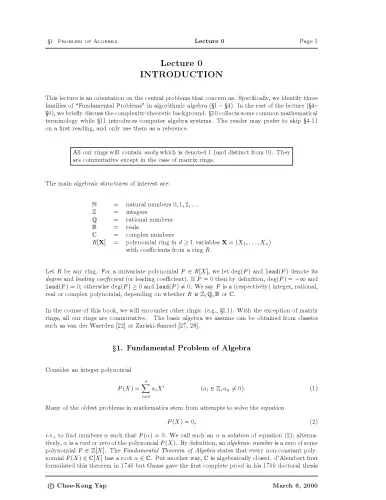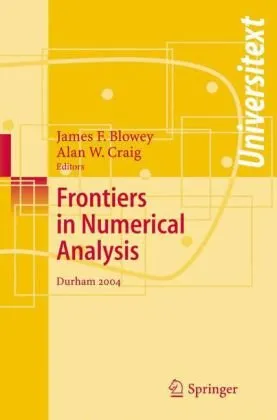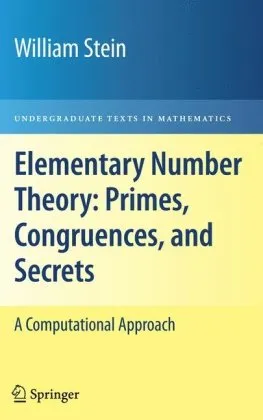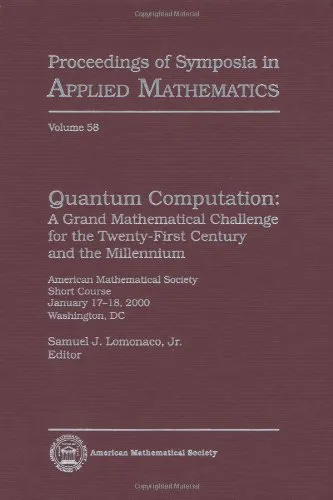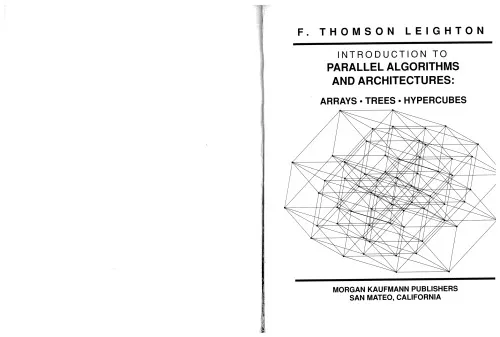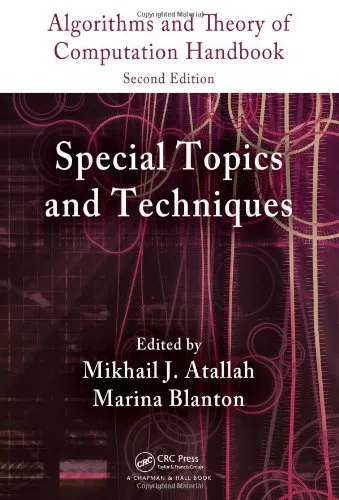Introduction to Parallel Processing : Algorithms and Architectures (Series in Computer Science)
4.0
بر اساس نظر کاربران

شما میتونید سوالاتتون در باره کتاب رو از هوش مصنوعیش بعد از ورود بپرسید
هر دانلود یا پرسش از هوش مصنوعی 2 امتیاز لازم دارد، برای بدست آوردن امتیاز رایگان، به صفحه ی راهنمای امتیازات سر بزنید و یک سری کار ارزشمند انجام بدینکتاب های مرتبط:
معرفی جامع کتاب "Introduction to Parallel Processing: Algorithms and Architectures"
کتاب "Introduction to Parallel Processing: Algorithms and Architectures" نوشتهی بنده، به طور ویژه به اصول پایه و معماریهای ابتدایی و پیشرفته پردازش موازی میپردازد. این اثر برای دانشجویان و مهندسین علوم کامپیوتر و برق طراحی شده تا آنها با مفاهیم نظری و کاربردهای عملی این زمینه آشنا شوند. در ادامه، بخشهای مختلف این معرفی را به تفصیل مشاهده میکنید.
خلاصهای از کتاب
پردازش موازی، به عنوان یکی از مهمترین زمینههای علمی و فنی در حوزه علوم کامپیوتر، تحول عظیمی در افزایش کارایی سیستمها و کاهش زمان پردازش دادهها ایجاد کرده است. این کتاب در سه بخش اصلی سازماندهی شده است:
- بخش نظری: معرفی مفاهیم اساسی، تعریف معماریها و بیان الگوریتمهای پایه در پردازش موازی.
- بخش معماری: بررسی ساختارها، شبکههای ارتباطی، و طراحی سیستمهای Multi-core، Shared memory و Distributed memory.
- بخش کاربردی: ارائه مثالهای عملی و چگونگی پیادهسازی الگوریتمها در ساختارهای واقعی.
هدف اصلی کتاب، پرورش دید تخصصی به مواردی چون Scalability، Synchronization و Load Balancing در سیستمهای پردازش موازی است. این مباحث به گونهای ارائه شدهاند که هم برای دانشجویان تازهکار و هم برای متخصصان باتجربه قابل فهم باشد.
نکات کلیدی (Key Takeaways)
- درک بنیادین مفاهیم پردازش موازی از الگوریتمها تا سیستمهای پیچیده.
- آشنایی با نقشههای معماری مانند Pipeline processing، SIMD و MIMD.
- مباحث عمیق پیرامون Time complexity و Speedup در محاسبات موازی.
- استفاده عملی از الگوریتمهای Sort، Matrix Multiplication، و Graph Traversal در معماریهای موازی.
- ملاحظات سختافزاری و نرمافزاری در طراحی سیستمهای موازی پایدار و کارآمد.
نقلقولهای معروف از کتاب
"The advent of parallel computing represents a fundamental paradigm shift in systems design, unlocking unprecedented potential for computational power."
"Achieving balance in workload distribution and minimizing communication latency are two pillars of efficient parallel algorithms."
چرا این کتاب مهم است؟
کتاب "Introduction to Parallel Processing: Algorithms and Architectures" به دلیل پوشش جامع، سبک نوشتاری شفاف، و ارائهی راهحلهای کاربردی برای مشکلات واقعی از اهمیت ویژهای برخوردار است. از دلایل اصلی اهمیت آن میتوان به موارد زیر اشاره کرد:
- پرهیز از پیچیدگیهای غیر ضروری و تمرکز بر موارد کلیدی و کاربردی.
- تلفیق معماریهای نوین و الگوریتمهای کلاسیک برای پوشش نیازهای عصر حاضر.
- مناسب بودن برای کسانی که میخواهند به سرعت وارد دنیای حرفهای پردازش موازی شوند.
- ایجاد پل ارتباطی میان تئوری و عمل در دنیای پیچیده محاسبات موازی.
این اثر به عنوان یک منبع معتبر و علمی، در بسیاری از دانشگاهها و مراکز تحقیقاتی برجسته به عنوان کتاب درسی و مرجع مورد استفاده قرار میگیرد.
Introduction to Parallel Processing: Algorithms and Architectures
Parallel processing has become a cornerstone of modern computing, enabling faster computations, scalable systems, and efficient data handling. "Introduction to Parallel Processing: Algorithms and Architectures" serves as a comprehensive and foundational text on this subject, addressing the essential aspects necessary for both students and professionals in computer science, engineering, and related fields. Authored to bridge the theoretical underpinnings with practical applications, the book delves deep into the algorithms, architectural paradigms, and challenges of parallel processing.
As the world increasingly relies on powerful computation to solve complex problems, understanding parallelism has become more critical than ever. This book lays out the framework to navigate this complexity, divided into logical, cohesive chapters covering a wide array of topics. It balances theoretical depth and detailed real-world insights to offer readers a thorough understanding of parallel algorithms and architecture design principles.
Detailed Summary of the Book
The book begins with an introductory exploration of parallelism, explaining the motivation behind parallel computing alongside its historical development and the essential shift from traditional serial computation. Detailed explorations of parallel processing models follow, including shared-memory and distributed-memory paradigms, as well as specialized architectures like SIMD (Single Instruction, Multiple Data) and MIMD (Multiple Instruction, Multiple Data).
Following the introduction to these foundational concepts, the text dives into parallel algorithms. Topics such as task decomposition, data sharing, load balancing, and synchronization are explained with clarity. These algorithmic discussions are supplemented by examples of real-world applications, ranging from matrix operations and graph traversal to sorting and searching algorithms. Practical pseudocode demonstrations complement these concepts to make implementation easier.
A significant portion of the book is devoted to architectural considerations, highlighting bus-based systems, crossbars, hypercubes, mesh networks, and other interconnection networks that form the backbone of parallel systems. These discussions emphasize scalability, fault tolerance, and performance optimization techniques critical for designing efficient parallel systems.
The closing chapters reflect on emerging trends in parallel processing, the role of software in harnessing hardware capabilities, and the challenges posed by increasing levels of hardware heterogeneity. These insights equip readers with the tools they need to design, develop, and evaluate high-performance computing systems in a rapidly evolving technological landscape.
Key Takeaways
- A solid foundation in parallel processing paradigms, models, and hardware design principles.
- Deep understanding of parallel algorithms with practical examples and pseudocode.
- Insights into interconnection networks and how they affect system scalability and performance.
- Real-world applications of parallel processing across fields like AI, simulation, and high-speed data analysis.
- Emerging challenges and trends in parallel computing, equipping readers for cutting-edge research and development.
Famous Quotes from the Book
"Parallelism is not just a tool for speeding up computation—it is a way of thinking about solving complex problems at scale."
"Optimizing performance in parallel systems requires as much attention to software design as it does to hardware efficiency."
"In parallel processing, the architecture is the canvas, the algorithms are the brushstrokes, and the imagination of the designer defines the masterpiece."
Why This Book Matters
In today's world, computational efficiency is at the heart of every technological advancement, from artificial intelligence to climate modeling and from video streaming services to cryptography. As a foundational text, "Introduction to Parallel Processing: Algorithms and Architectures" fills the critical gap between academic knowledge and practical implementation.
For students, it serves as a guide to mastering the essential concepts underlying parallel computation. For industry professionals and researchers, it offers advanced insights into designing scalable systems and solving performance bottlenecks.
What sets this book apart is its balance of accessibility and depth. Concepts are clearly explained with a logical progression, making it suitable for newcomers, yet the coverage is comprehensive enough to challenge seasoned experts. Ultimately, the book matters because it equips readers with the mindset and tools to tackle some of the most complex computational challenges of our time.
دانلود رایگان مستقیم
شما میتونید سوالاتتون در باره کتاب رو از هوش مصنوعیش بعد از ورود بپرسید
دسترسی به کتابها از طریق پلتفرمهای قانونی و کتابخانههای عمومی نه تنها از حقوق نویسندگان و ناشران حمایت میکند، بلکه به پایداری فرهنگ کتابخوانی نیز کمک میرساند. پیش از دانلود، لحظهای به بررسی این گزینهها فکر کنید.
این کتاب رو در پلتفرم های دیگه ببینید
WorldCat به شما کمک میکنه تا کتاب ها رو در کتابخانه های سراسر دنیا پیدا کنید
امتیازها، نظرات تخصصی و صحبت ها درباره کتاب را در Goodreads ببینید
کتابهای کمیاب یا دست دوم را در AbeBooks پیدا کنید و بخرید
1320
بازدید4.0
امتیاز0
نظر98%
رضایتنظرات:
4.0
بر اساس 0 نظر کاربران
Questions & Answers
Ask questions about this book or help others by answering
No questions yet. Be the first to ask!
